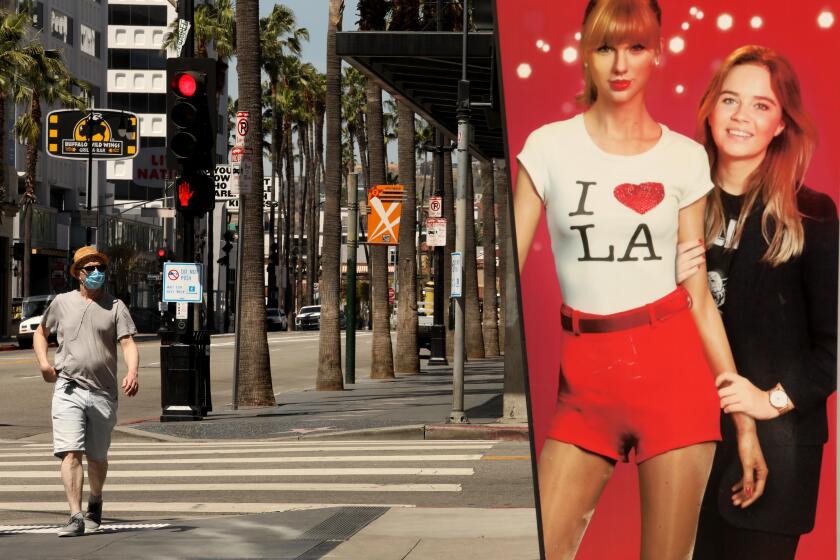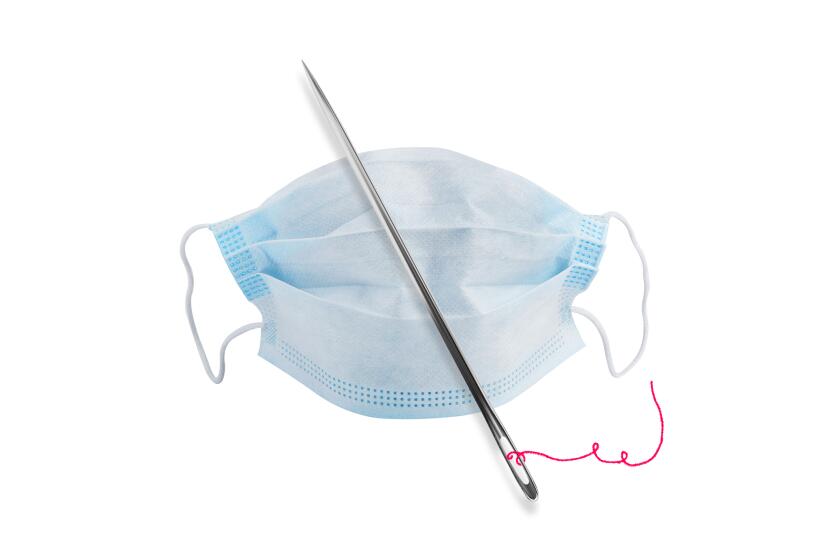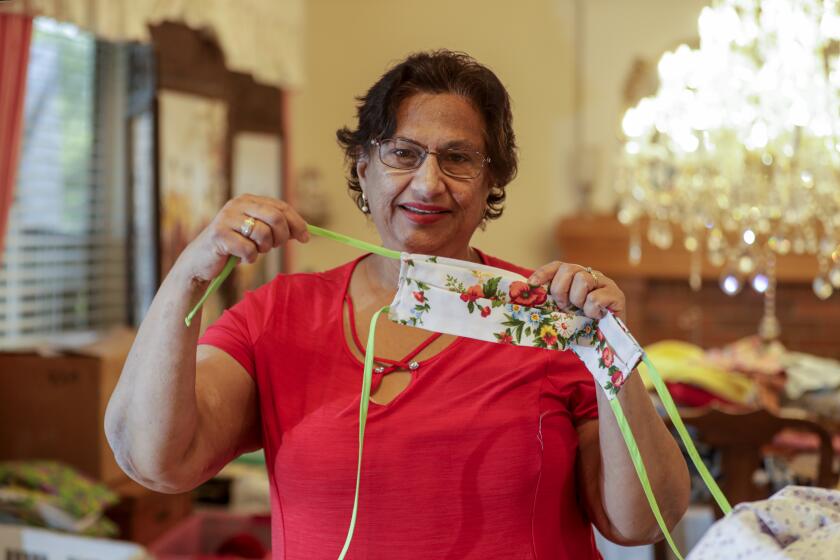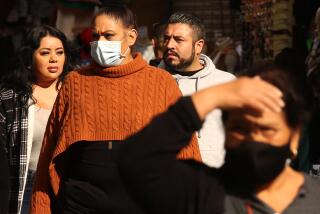L.A. now requires face coverings even when outside. Here are the rules
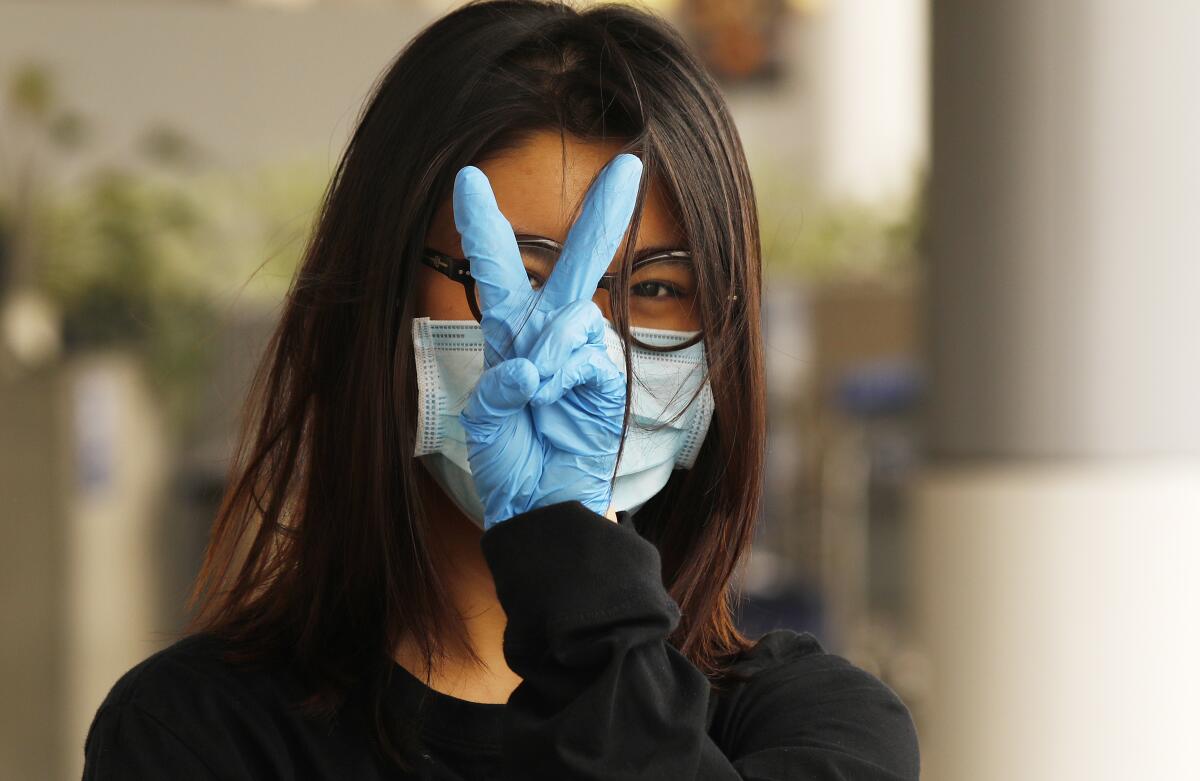
Los Angeles residents are now required to wear masks when going outside for any tasks.
The new rule marks a significant increase in the city’s mandates, one that Mayor Eric Garcetti says is a necessary step to help slow the spread of the coronavirus and eventually reopen the economy in a bigger way.
“Bring your mask with you whenever you leave your home,” Garcetti said. “That will help us get more freedoms.”
‘We may be moving gently at this point toward the Asian culture,’ one health expert says of everyday mask-wearing.
Where must you wear a face covering?
- If you visit any retail business (except those in indoor malls, which are still closed), including those that are open only for curbside or doorside pickup
- If you exercise in your neighborhood or are on a trail, golf course or beach (where you must wear a face covering if you are out of the water and people are nearby)
- If you ride on L.A. Department of Transportation transit buses, Metro buses or trains, or travel through Los Angeles International Airport
- The new guidelines on face coverings exempt children under 2 and people with certain disabilities.
Here is where masks are currently required, as well as proposals that would dramatically increase face-covering requirements.
Why is this action being taken?
Many experts have said masks can provide some protection against the spread of the virus. Up to now, the city has required face coverings only while conducting essential business, such as grocery shopping. The city also require workers to wear masks.
“Face coverings help stop the spread of the virus, and wearing them in public creates a layer of protection. However, a face covering is not a substitute for other critical measures to slow the spread of COVID-19 — most importantly, staying home as much as possible, washing hands frequently, and practicing safe physical distancing of at least 6 feet in all settings,” the city said in its order.
DIY coronavirus mask instructions from crafters and doctors.
Where is this coming from?
In recent weeks, Los Angeles leaders have been discussing whether to require Angelenos to have masks or other facial coverings at hand whenever they leave their homes, a proposal championed by City Councilman Paul Koretz as a way to prevent new infections.
“The last thing we need is another spike in cases to set us back as we’re trying to move forward,” Koretz said earlier this month.
“People still walk dogs. They still ride bicycles. They still may stop and chat with their neighbors,” he said. “This would reduce the spread.”
The councilman argued that mandating mask wearing would help keep people who are infected but asymptomatic from unknowingly transmitting the virus. He pointed to the Czech Republic, which imposed a similar requirement, as an example of how the mandate could reduce new infections.
Some council members raised concerns about racially discriminatory enforcement of mask rules against African Americans.
Face coverings and masks may help to stem the spread of the coronavirus. But how to keep them clean?
What are some face covering basics?
Here’s some advice from California health officials:
- Wash your cloth face covering frequently, ideally after each use, or at least daily.
- Have a separate bag or bin to keep used cloth face coverings in until they can be laundered with detergent and hot water and dried on a hot cycle.
- If you must rewear your cloth face covering before washing, wash your hands immediately after putting it back on and avoid touching your face.
- Discard cloth face coverings that no longer cover the nose and mouth, have stretched-out or damaged ties or straps, cannot stay on the face, or have holes or tears in the fabric.
Health experts also have suggested routinely washing your hands with soap and water or using hand sanitizer before and after touching your face or face coverings.
Once surgical masks get moist, experts say their effectiveness diminishes. If a makeshift mask gets moist or is visibly soiled, it’s time to switch to a clean one.
To clean them, run masks through the laundry or hand wash them with soap and water.
More to Read
Sign up for Essential California
The most important California stories and recommendations in your inbox every morning.
You may occasionally receive promotional content from the Los Angeles Times.
